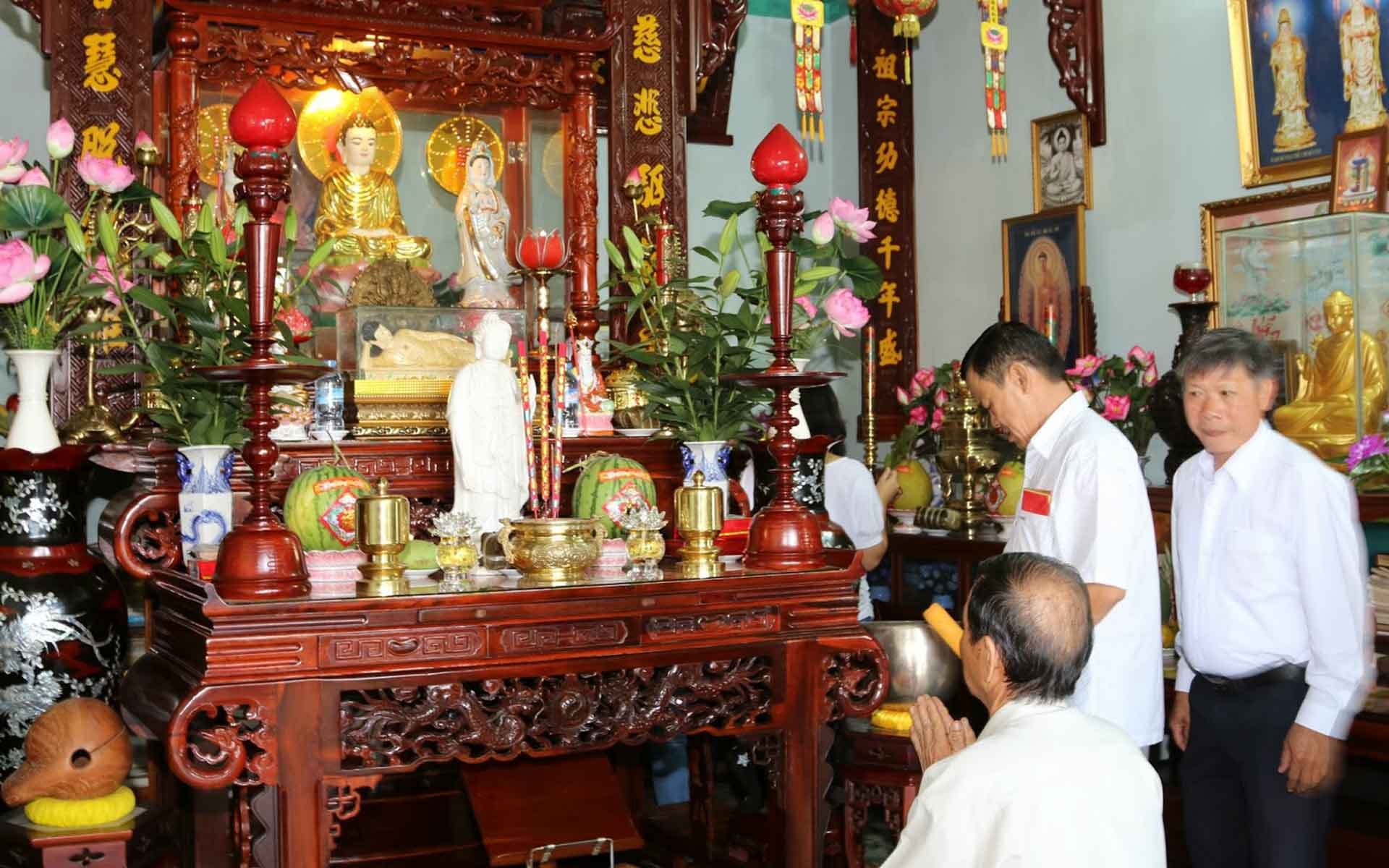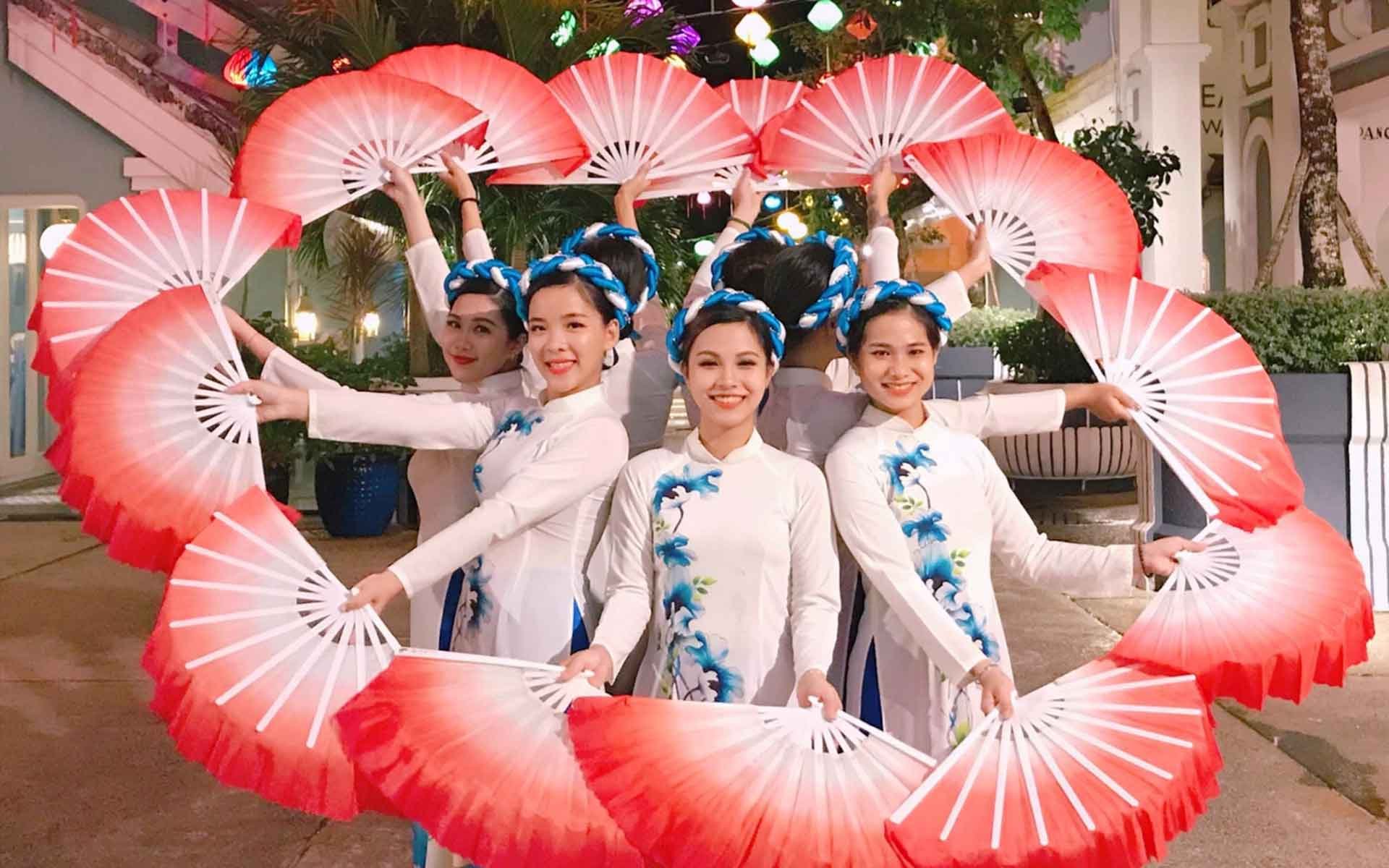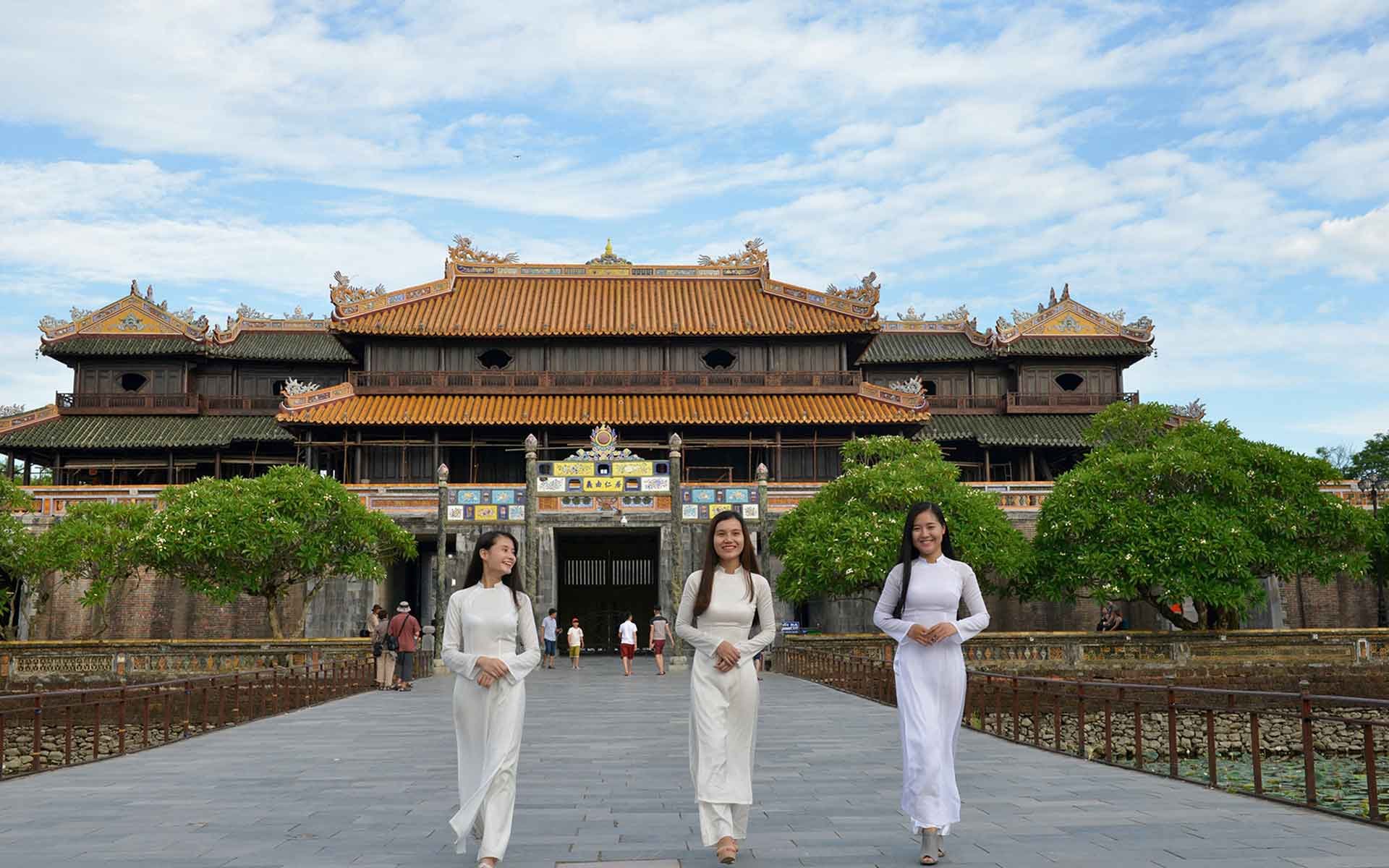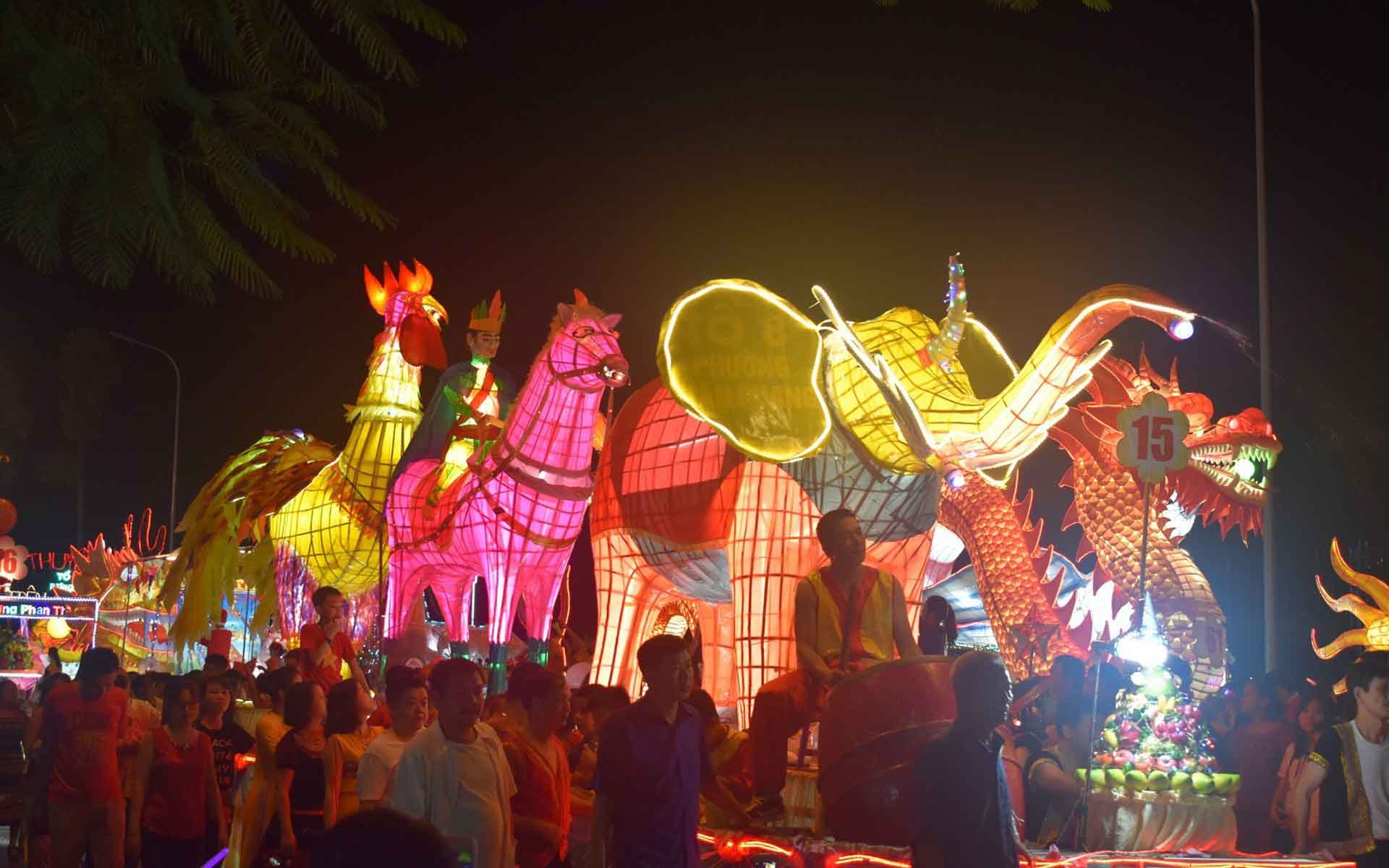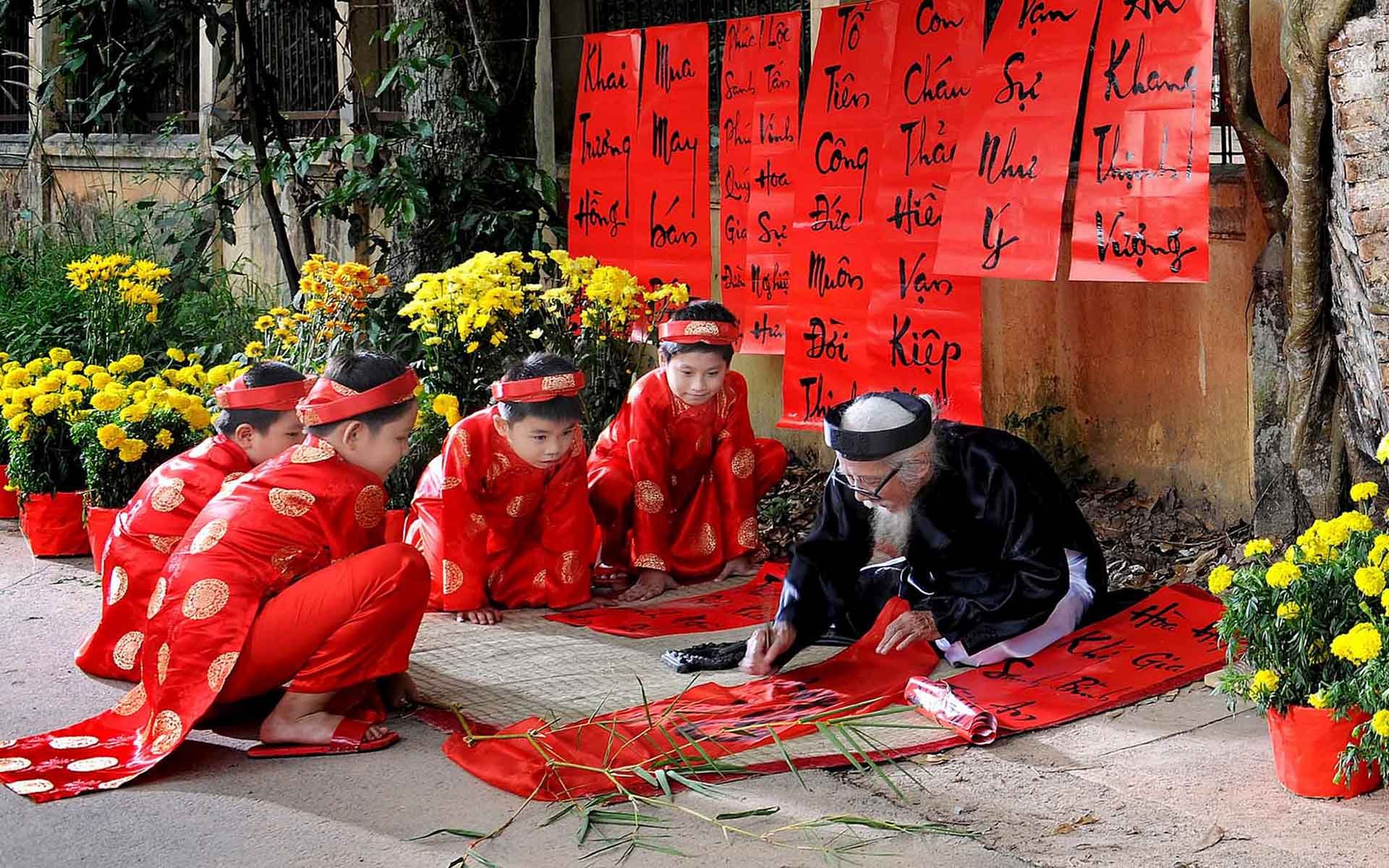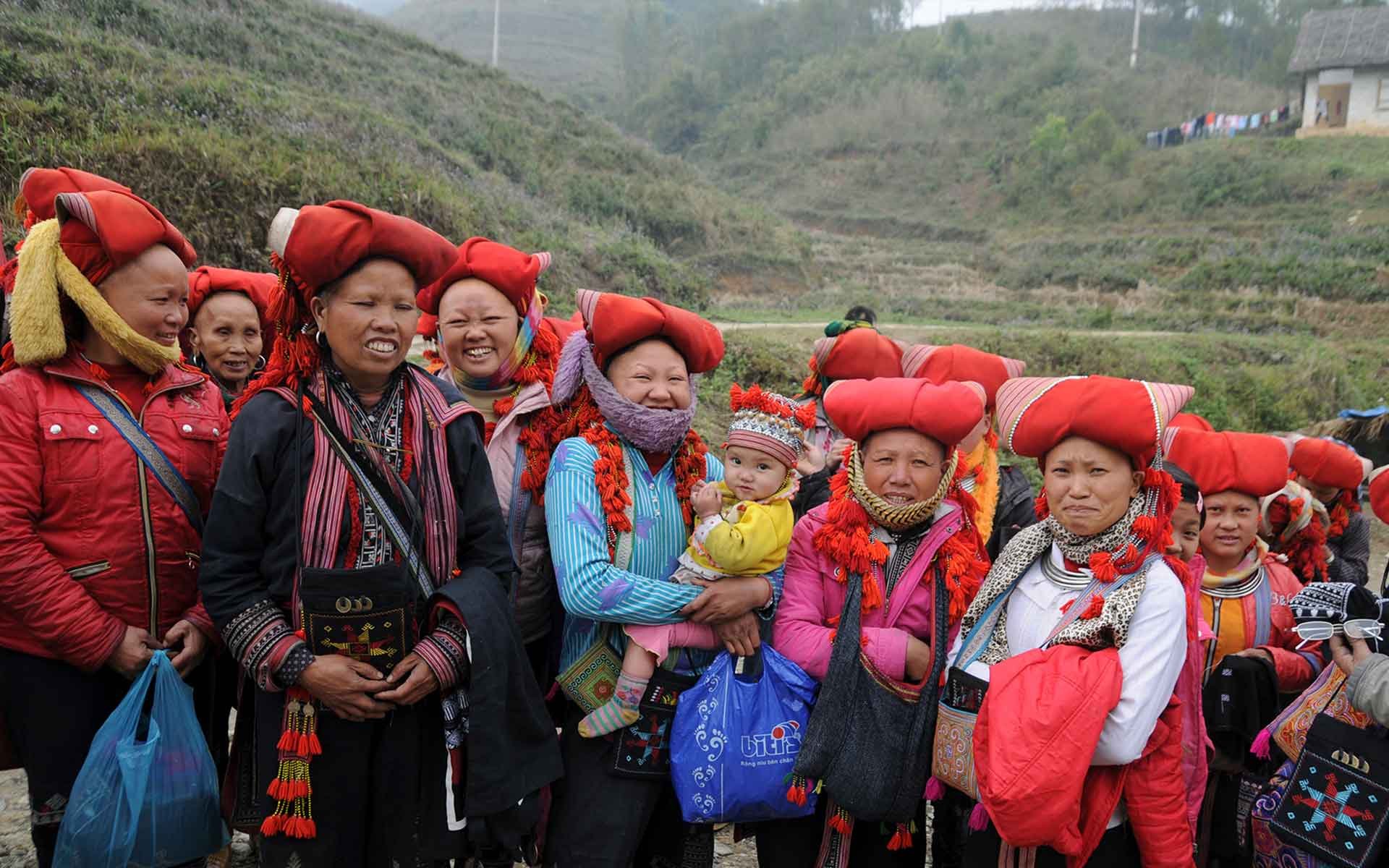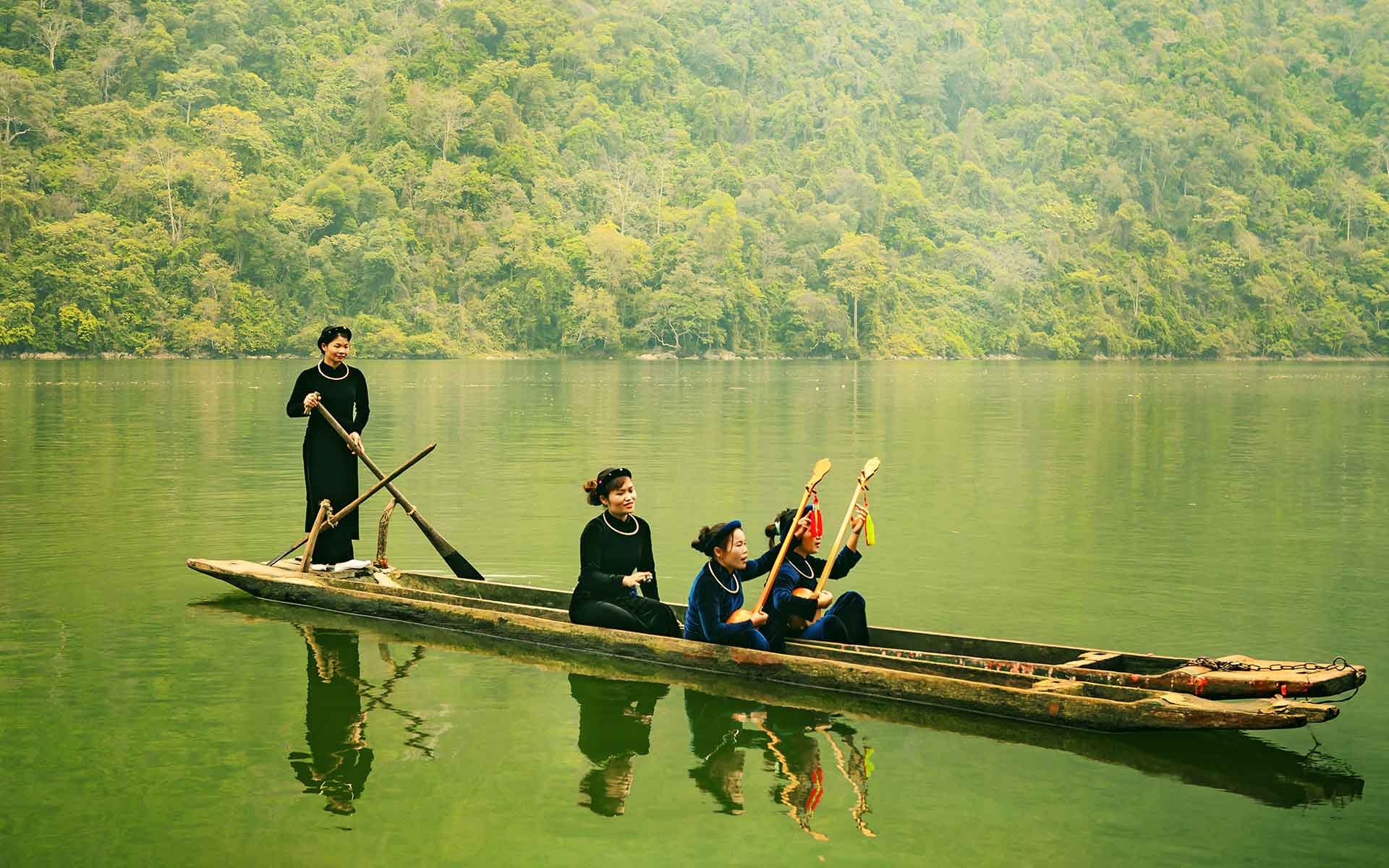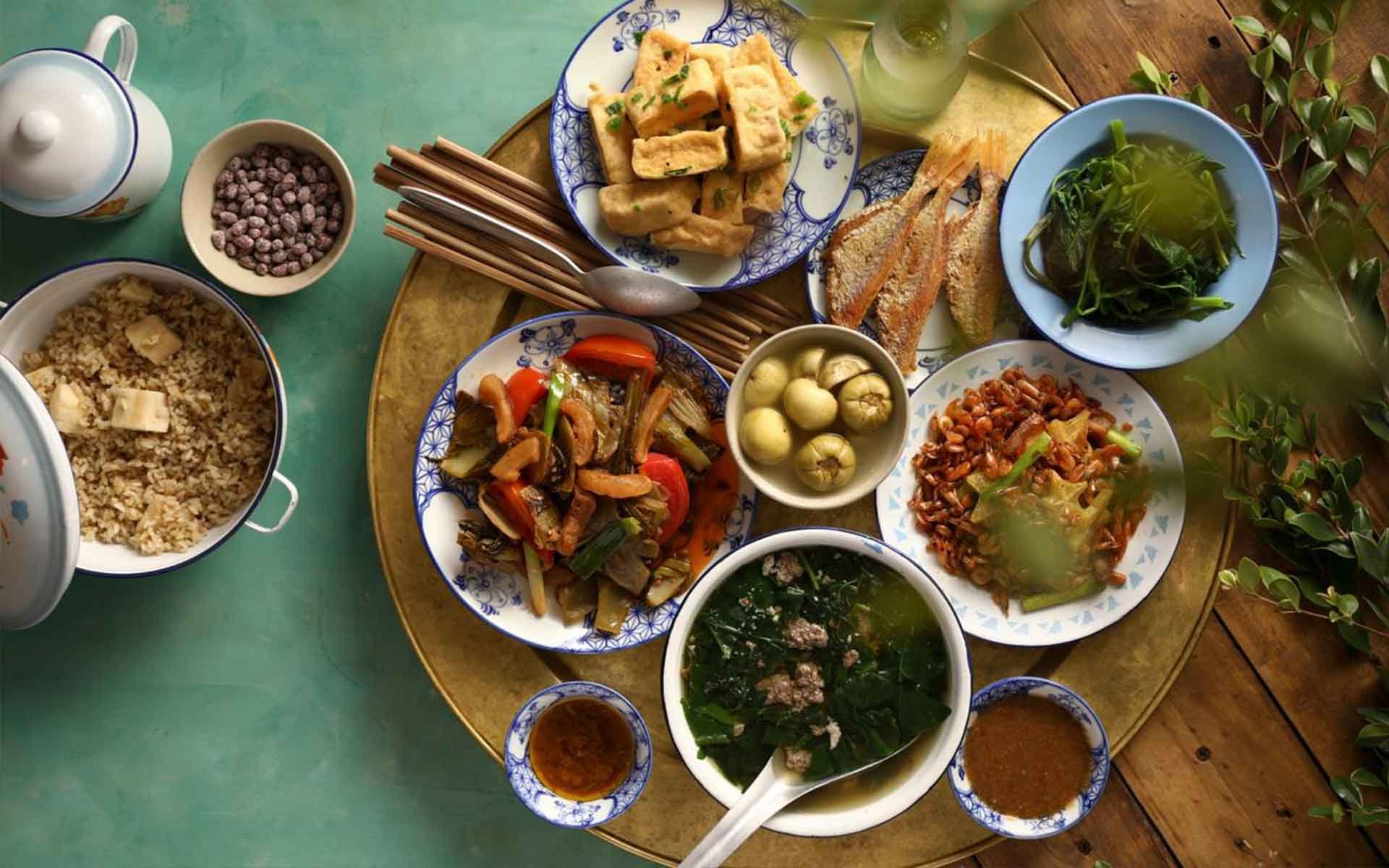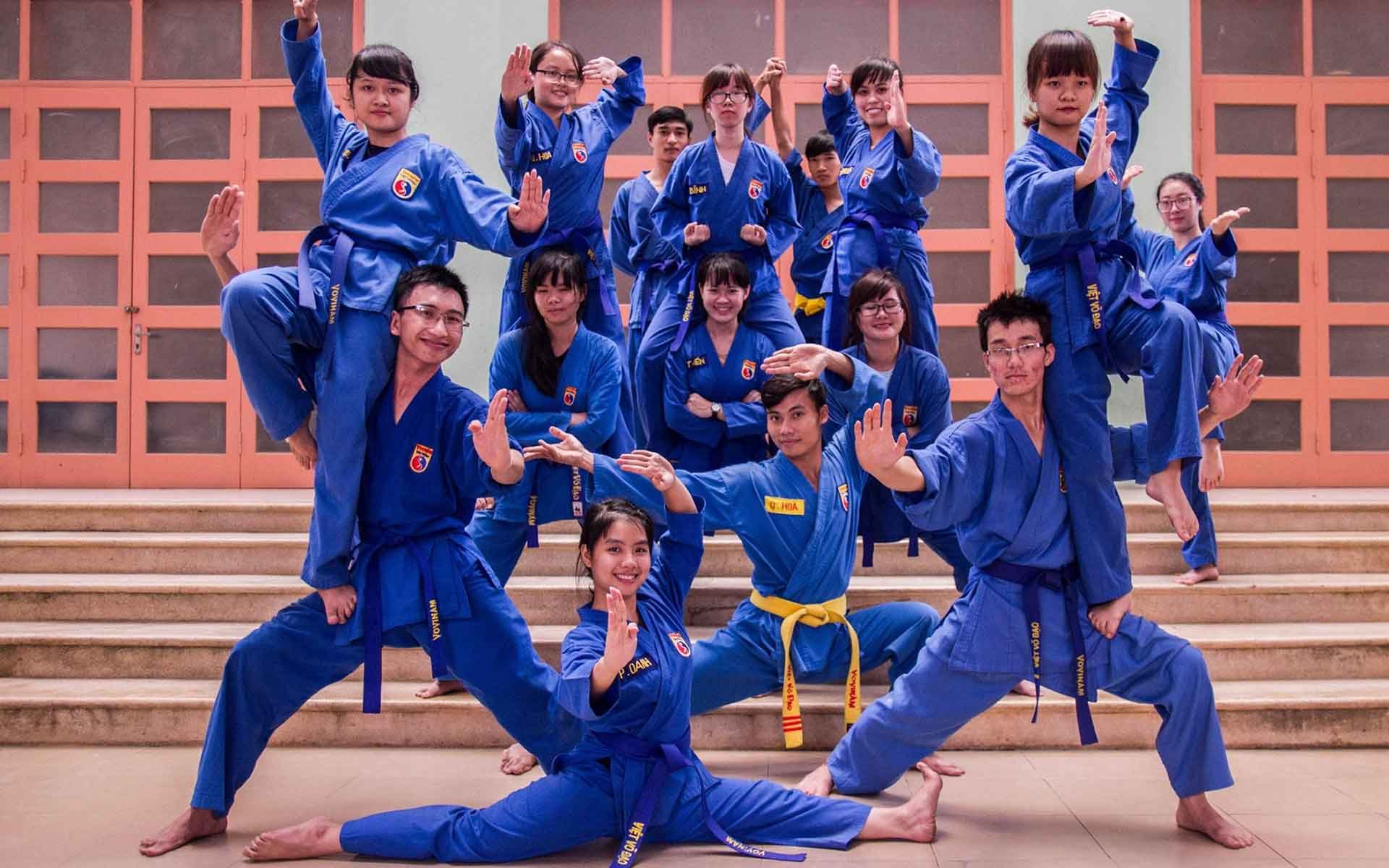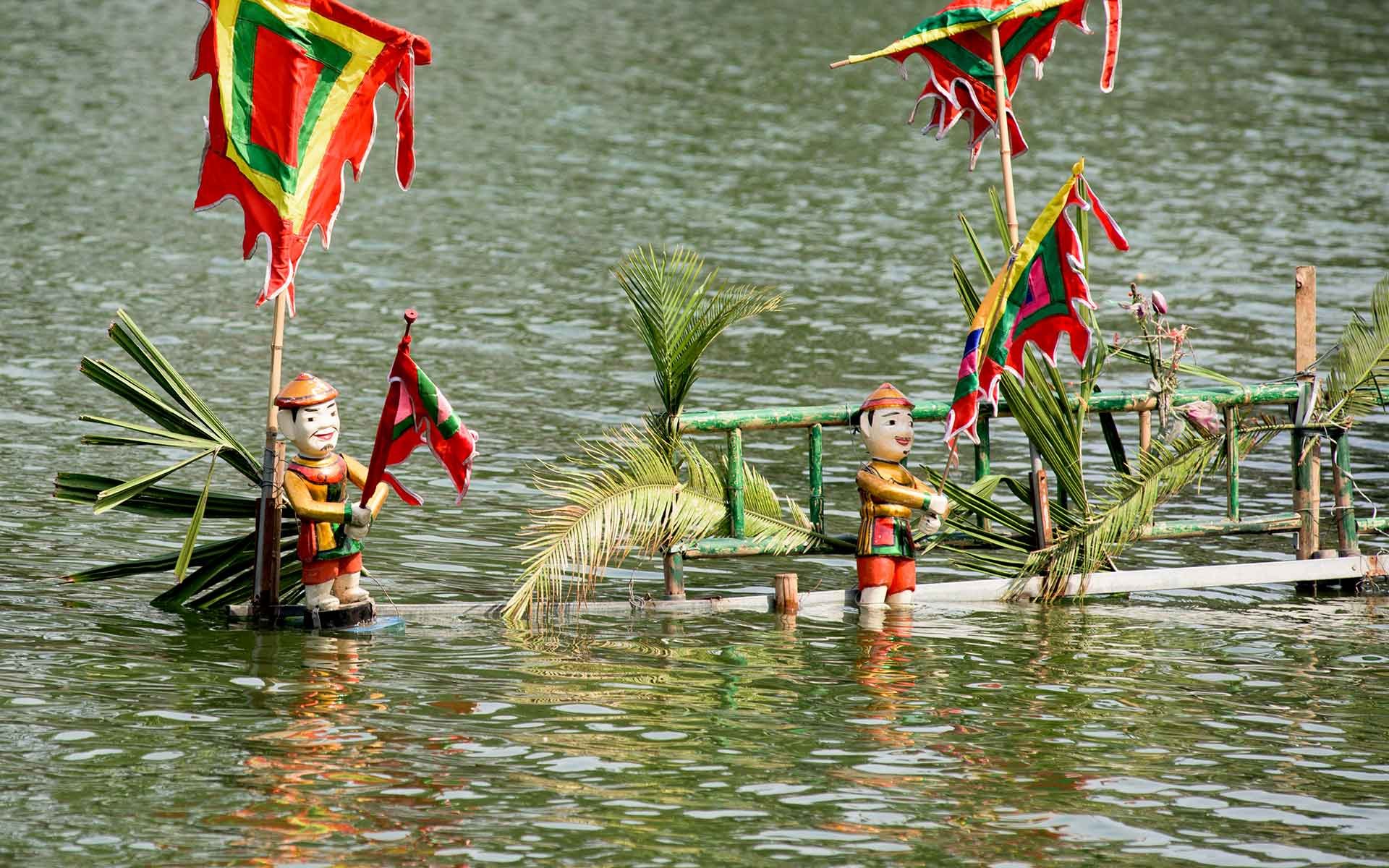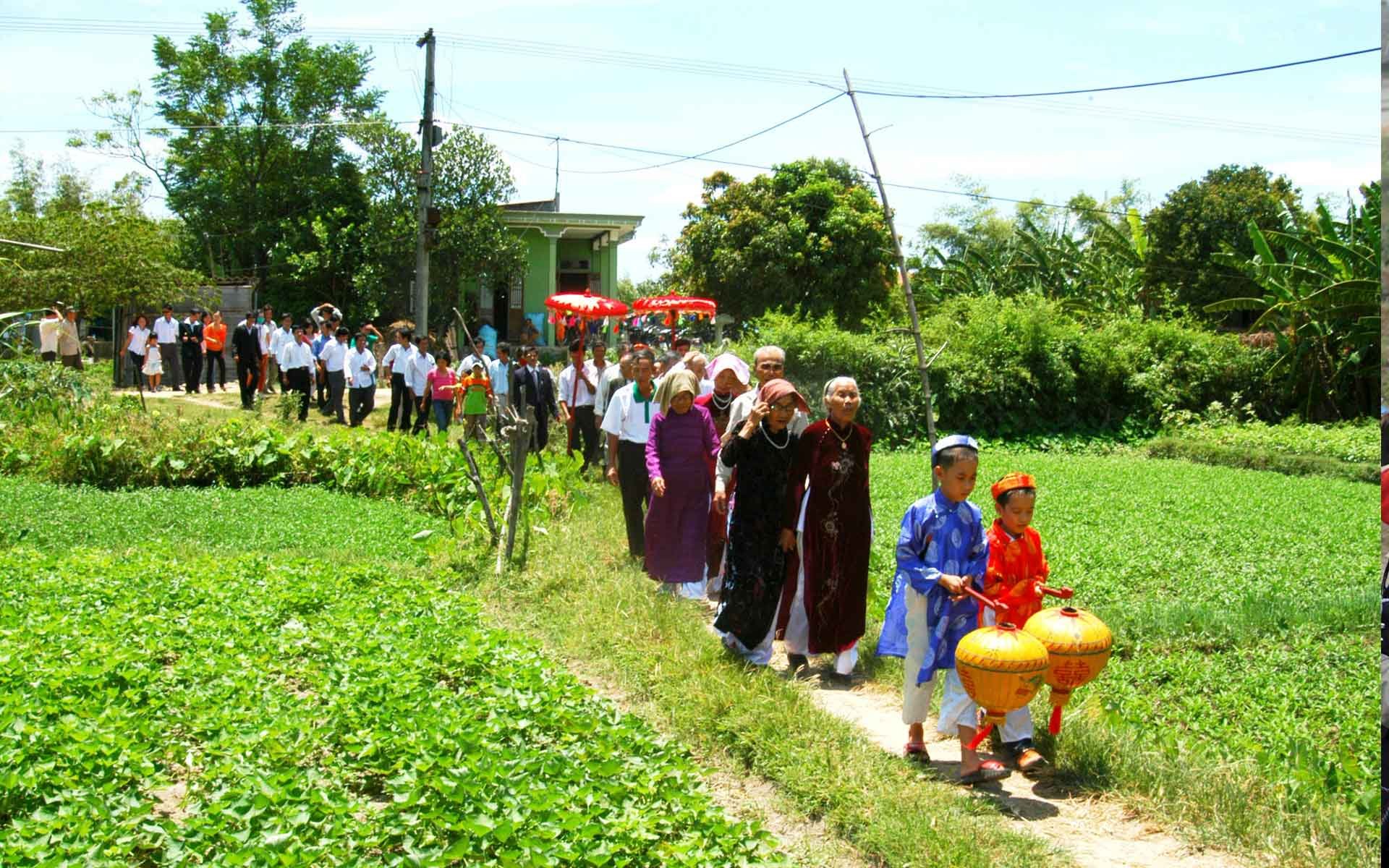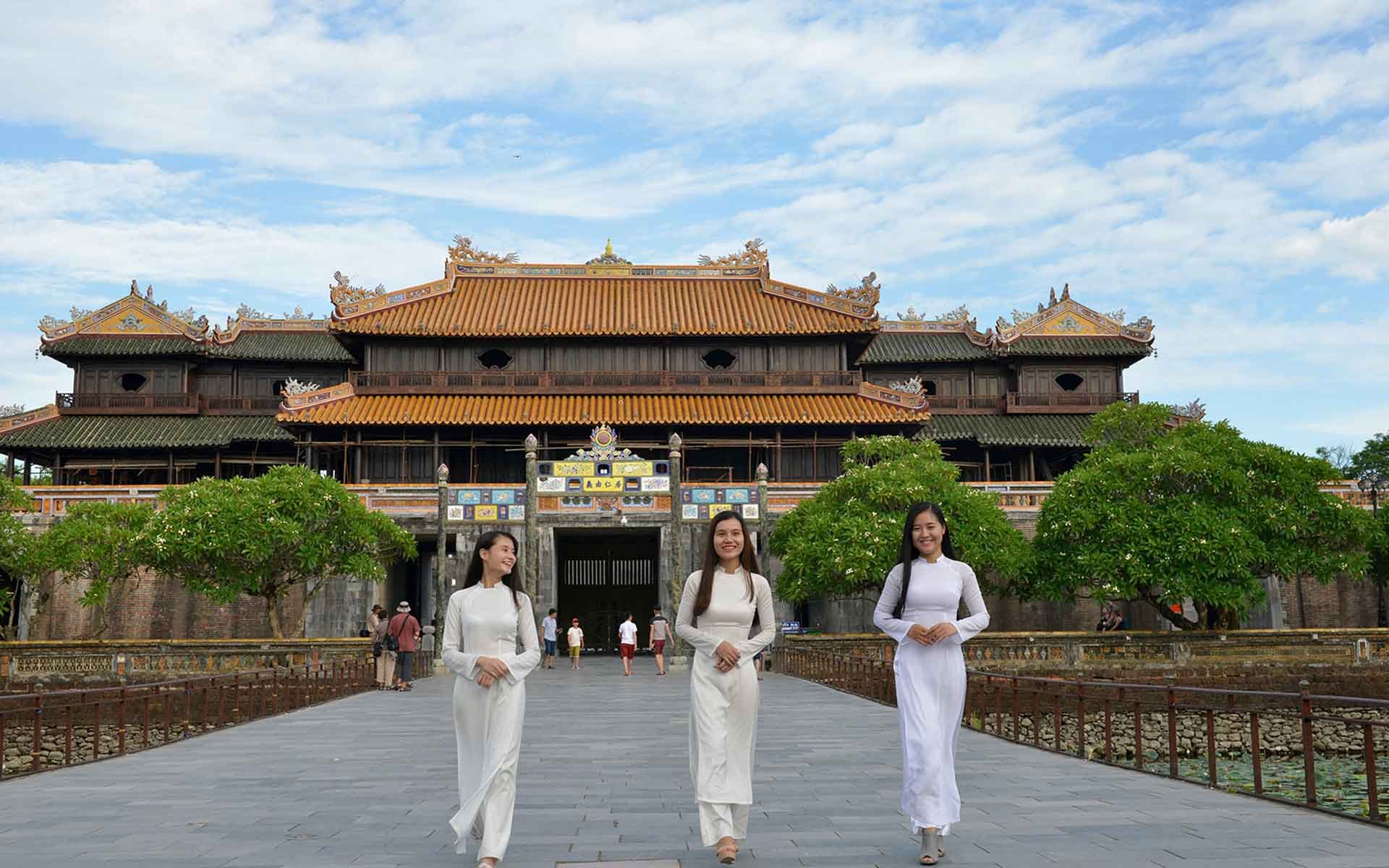
Vietnamese Culture is one of the oldest culture in the World which has undergone changes almost four thousands of years.
Some people said Vietnamese culture has influence from Chinese culture but there is a study shows Vietnam culture has its own characters and has parallel development to Chinese culture.
Along the history of Vietnam from the Dynasty of Trieu, Dinh, Ly, Tran & Le. In the pretty much same time with Chinese dynasty of Han, Duong, Tong, Nguyen.
According to scholarly sources, the culture of Vietnam originated from ancient Nam Viet, an ancient kingdom of Giao Chi people which shared characteristics of Han Chinese cultures and the ancient Dong Son Culture, considered one of the most important progenitors of its indigenous culture, during the Bronze Age. Nam Viet was occupied by Northern evaders in 111 BC, leading to the first Chinese domination of Vietnam lasting over thousand years that propelled Chinese influences onto Vietnamese culture in terms of Confucian philosophy governance, and the arts.
Following independence from Chinese in the 10th century, successive Vietnamese imperial dynasties flourished as the country embarked on a southward expansion that annexed territories of the Champa and Khmer civilizations, which resulted in regional variances of modern-day Vietnamese culture. During the French colonial period in the mid-19th century, Vietnamese culture absorbed European influences including architecture, Catholicism, and the adoption of the Latin alphabet, which created the new official writing system that replaced the previous Chinese characters and Nom scripts.
After French left, Vietnamese culture was characterized by government-controlled propaganda, which emphasized the importance of cultural exchanges with fellow communist nations such as the Soviet Union, China, and Cuba. Following the reform in 1986, Vietnam has continuously absorbed various influences from Asian, European, and American cultures. Part of the East Asian cultural sphere, Vietnamese culture has certain characteristic features including ancestor veneration and worship, respect for community and family values, and manual labor religious belief. Important cultural symbols include 4 holy animals: Dragons, Turtles, Phoenix, Unicorn. The national flower is lotuses and the most popular plant in Vietnam is bamboo.
Vietnamese Cuisine
Vietnamese food is fresh and healthy and getting more and more popular all over the World. It exhibits great diversity but can be classified into three primary categories by locations: the north, south, and central regions of the country. Many types of noodles and noodle soups and all type of spring rolls are popular here. Less use of oil and greater use of fresh vegetables is preferred. Soy sauce, fish sauce, mint, and basil are popular ingredients. Rice is the main food and eaten in 3 meals a day. The flavors of Vietnamese food range from spicy and sour to sweet. The Noodle Soup originating in North Vietnam is a noted Vietnamese dish and features rice noodles with beef, chicken, fish, sea food…. soup and scallions or bean sprouts as accompaniments. There is vegetarian noodle soup too.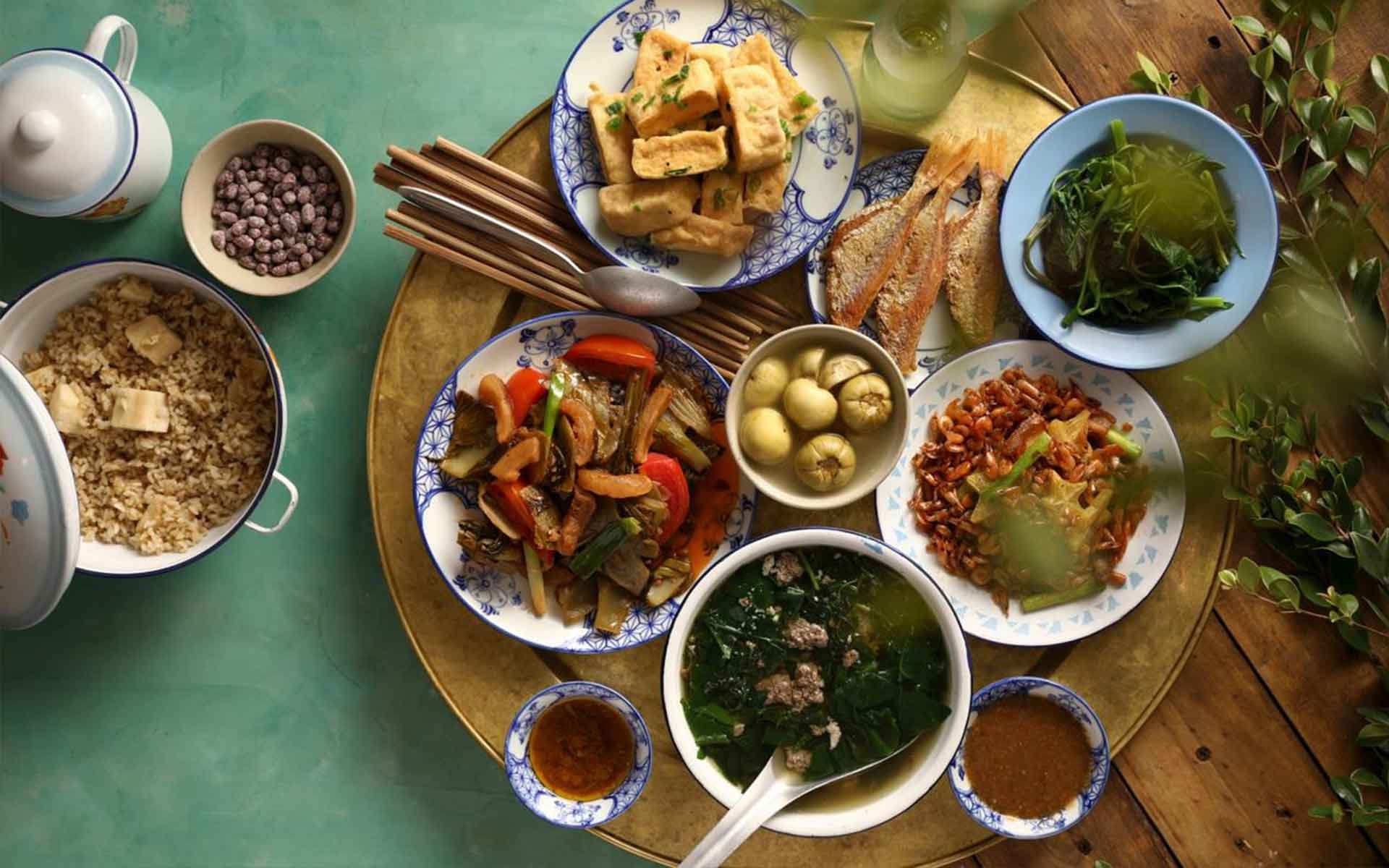
Traditional costumes of Vietnam
54 tribes in Vietnam has their own traditional costumes. The traditional dress of the Vietnamese people changed significantly from time to time and depended largely on the whims and fancies of the region’s rulers. The common people of the country had greater freedom to choose their clothing prior to the Nguyen dynasty. During Nguyen Dynasty, several restrictions were placed on the type and colors of clothes that could be worn by the common people of Vietnam.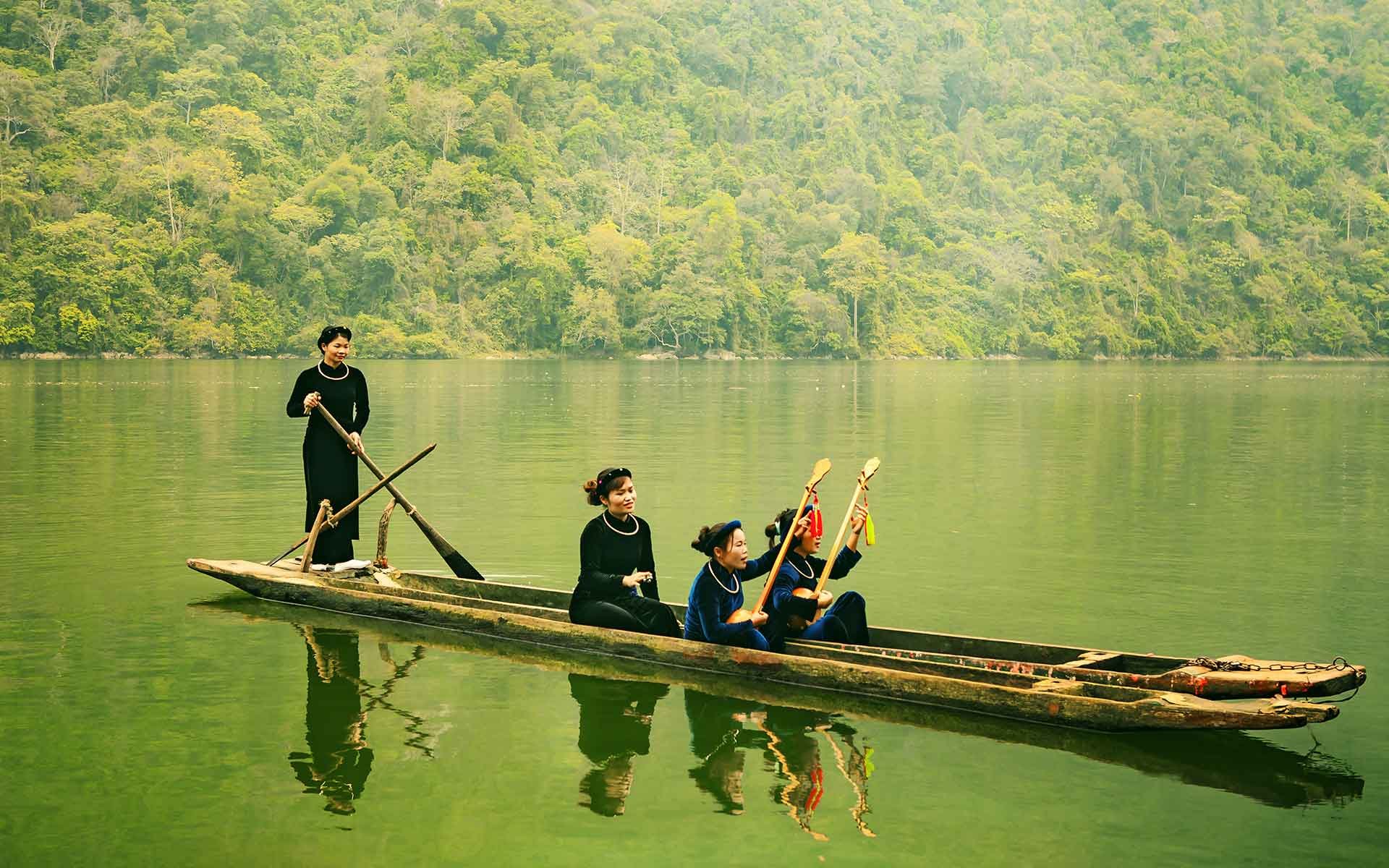
Some of the examples of traditional Vietnamese costumes are the Áo giao lĩnh, the Áo Tứ Thân, Áo cánh, and the Áo bà ba. The first one refers to a cross-collared robe worn by the Vietnamese men while the second is a four-part dress worn by the women. The last two dresses were worn by the peasants in the north and south, respectively and appeared like silk-pajama-type costumes. The color code of the dresses also varied from time to time and during Nguyen dynasty, only the monarchs enjoyed the exclusive rights of wearing golden clothes while purple and red were popular among the nobles and aristocrats. The headgear worn in Vietnam changed over the years with the conical hat or Non La being the most popular among the community.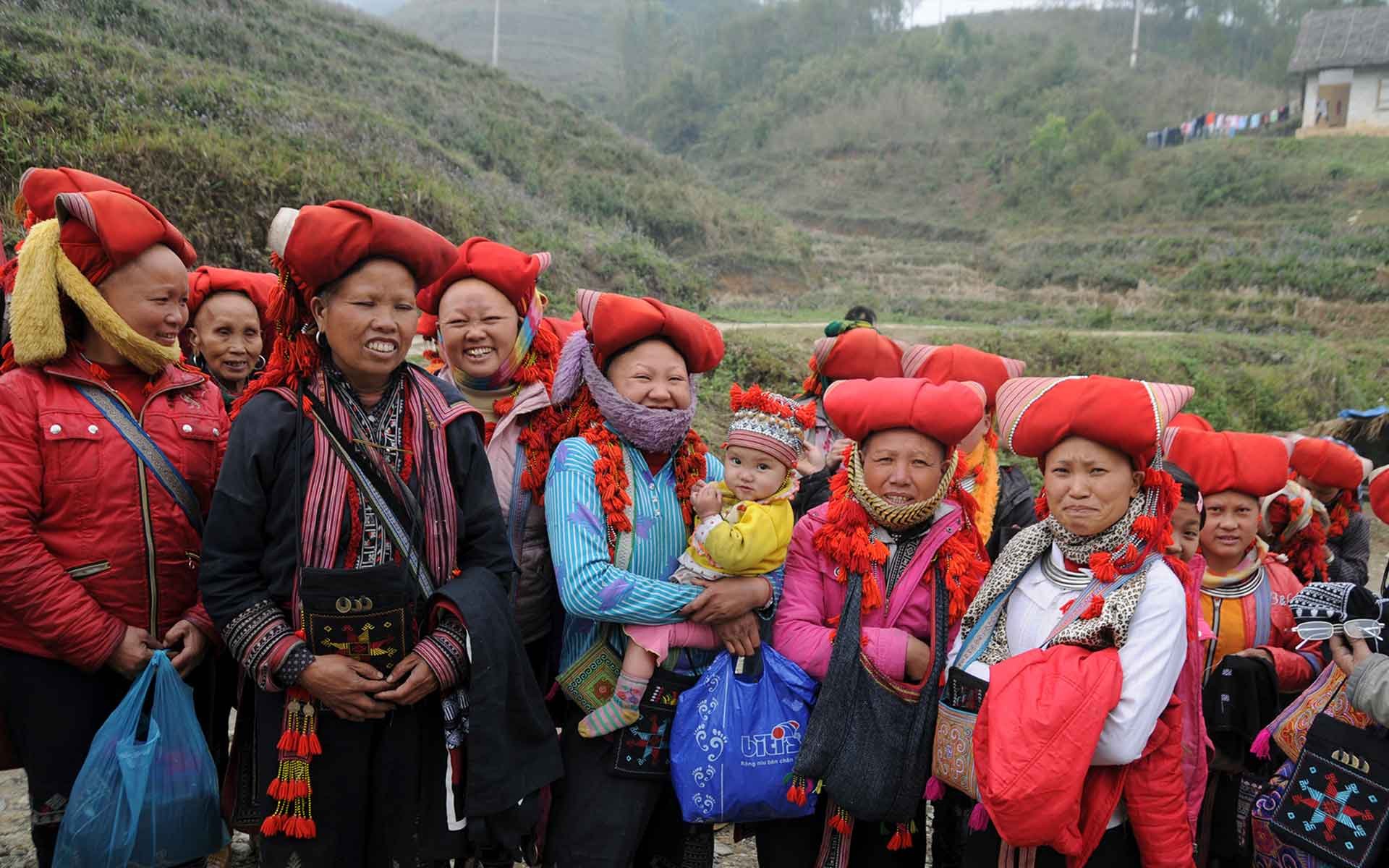
Vietnamese Arts & Literature
Literature in Vietnam has greatly evolved over the years from romanticism to realism. Two aspects of the literature in the country are the folk literature and the written literature both of which developed almost at the same time. Folk literature features fairytales, folk legends, humorous stories, and epic poems. Written literature was previously written in the Cham and Nom characters and focused on poetry and prose. Now, it is mostly written in the National Language and includes short stories, dramas, novels, etc.
Vietnamese art is mainly influenced by Buddhism, Taoism, and Confucianism. However, more recently, the Cham and French influence have also been reflected in the art presentations. Silk painting is popular in Vietnam and involves the liberal use of colors. Calligraphy is also a much-respected art form and often, during festivals like the Lunar New Year, On the third day of new year people would visit a village teacher or an erudite scholar to obtain calligraphy hangings for their homes. Vietnamese wood-block prints are also quite popular. Water puppetry and several forms of theaters represent other performing art forms in Vietnam.
Religion and philosophy of Vietnam
Most of Vietnamese people worshiping their ancestors and believe in animism. In the ID most of Vietnamese (about 90%), the line: Religion: None.
In reality ,religion in Vietnam has historically been largely defined by a mix of Buddhism, Confucianism, and Taoism, known in Vietnamese as the Tam Giao (“triple religion”).Catholicism is also practiced in modern Vietnam.
Ancestor worship is common in Vietnamese culture. Most Vietnamese, regardless of religious denomination, practice ancestor worship and have an ancestor altar at their home or business, a testament to the emphasis Vietnamese culture places on filial piety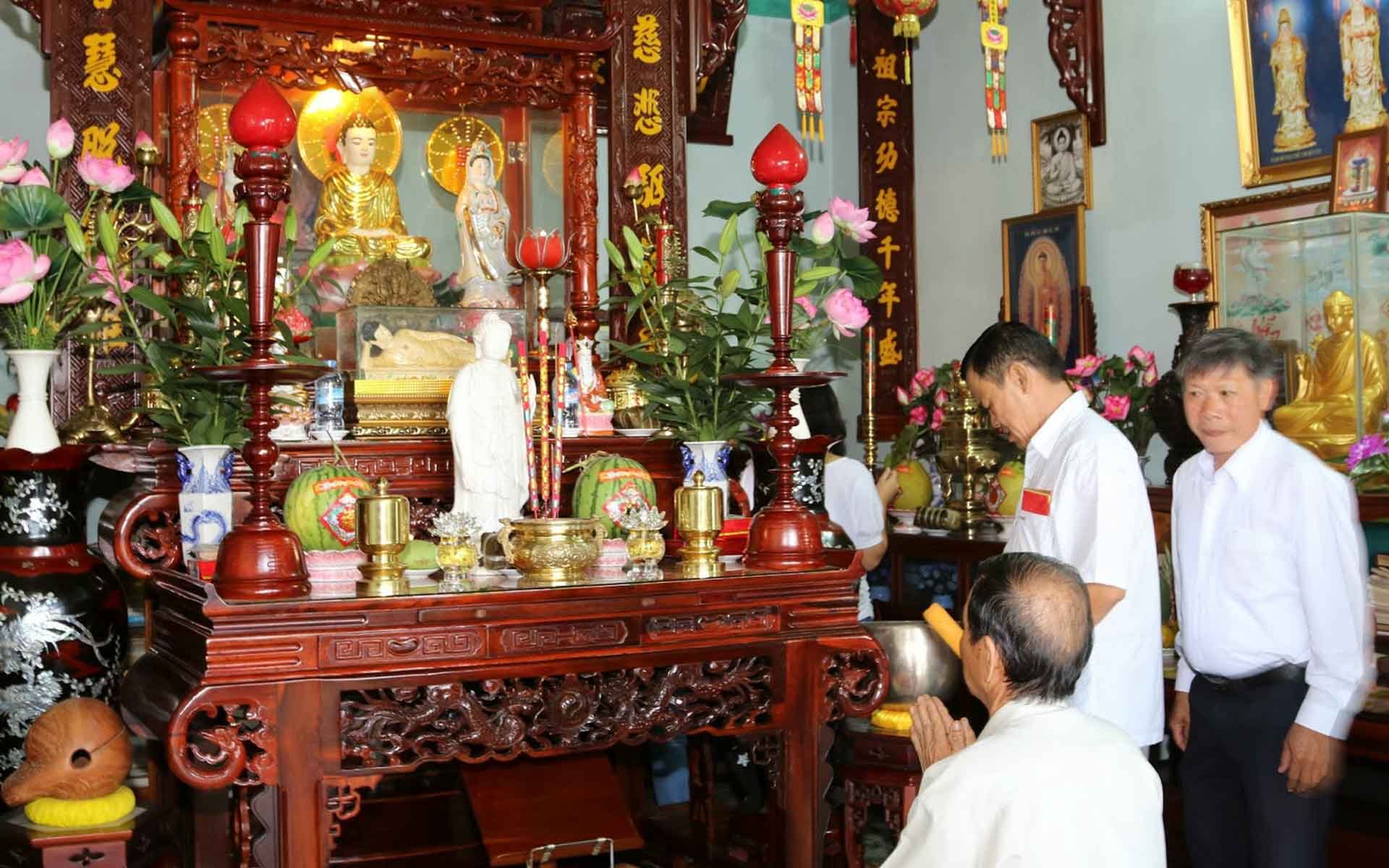
Social Beliefs & Customs in Vietnam
Family is very strong in Vietnam. Family and clan (Dong Ho) are valued over individualism. Clan is the most important social unit in the country and each clan features a patriarch heading the clan and a clan altar. Even today, in some parts of the country, the tradition of clan members living together in longhouses is quite prevalent. It is also not uncommon to see three to four generations of a family living together in the same house. Members of a clan are related by blood and often name their villages based on their clan names. Death commemorations of clan members are usually attended by all members of the clan and villagers. Weddings in Vietnam earlier was arranged mainly by parents and people were married very young. However, things have changed so much in recent years since Vietnam Open the door to the World and tourism pick up in early of 90. Vietnamese youth enjoy greater freedom of choosing the time of their marriage and their partner. Weddings are still mostly held in the traditional manner with elaborate rituals and ceremonies. The date for Wedding was carefully selected by Feng Shui master or most respected man in the Clan.
The traditional funeral ceremony in Vietnam is also quite elaborate and long-stretched. The body of the dead person is cleaned with fragrant water and dressed carefully in the special clothes. A lot of mourning following and depends on each tribe and location, they have the slightly different ceremony. Later the body will be burying, the most popular method. Recently, some area, people choose cremation instead of burying. Only 1 case of remains in frozen condition and several cases of Monks body was kept inside the statues…
According to Confucian, men and women can not touch hand unless they are husband and wife so Vietnamese people don’t hug when meeting. They say ” Xin Chao” or handshake between men.
People in the city talk gently and quietly and people come from the countryside or from the sea talk pretty loud. They work on the farm or ocean and they got to talk even louder than the wind or the waves.
Vietnamese Music & Dance
Vietnam is associated with a rich tradition of dance and music. Vietnamese music also exhibits variance in each part of Vietnam. It is older and more formal in the north while Champa culture exerts considerable influence on Central classical music and music in the southern part of the country is a livelier affair. The country has nearly 50 national music instruments. The Imperial Court music and the Ca Tru are important traditional forms of Vietnamese music.
The great ethnic diversity of Vietnam has gifted the country with diverse dance forms. These dances are usually performed at the cultural programs and festivals held in the country. The Lion dance, platter dance, fan dance, imperial lantern dance is some of the traditional dance forms of Vietnam. The dances that developed in the imperial courts of Vietnam are quite complex in nature and require great skills to be mastered.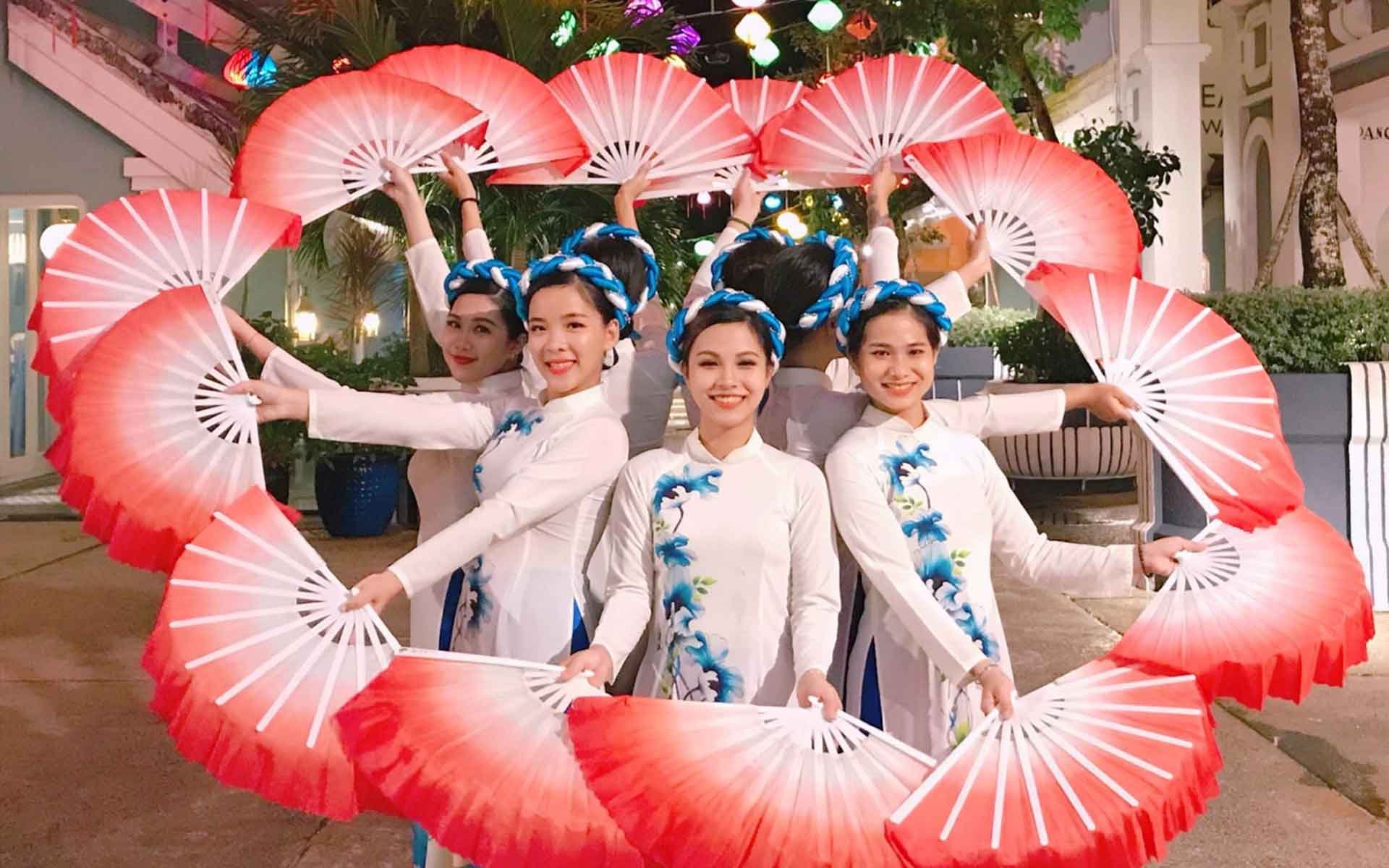
Ethnic groups in Vietnam
Vietnam is a multiethnic country with over fifty distinct groups (54 Totally). Each of them has its own language, lifestyle, and cultural heritage. Many of the local ethnic groups residing in mountain areas are known collectively in the West as Montagnard or Degar. The largest ethnic groups are: Kinh (Viet) 85.7%, Tay 1.9%, Tai Ethnic 1.8%, Mường 1.5%, Khmer Krom 1.5%, Hmong 1.2%, Nung 1.1%, Hoa 1%, with all others comprising the remaining 4.3% (2009 census).
The Vietnamese has term for ethnic group (literally “minority people”). One distinctive feature of highland ethnic minority groups in Vietnam is that they are colorfully attired whether at home, in the farm, traveling or in their home town. Many ethnic groups elsewhere such as southern part of Vietnam, Cambodia, Laos, Myanmar, China, Papua New Guinea, and many other countries do not wear attractive clothes while engaged in their day-to-day activities.
The clothing of one group is quite different from that of other groups and adds color to the social landscape. When you travel in Vietnam, you will meet and even talk to many of them. In the trip t Sapa, you may see dozens of them or some province as Lai Chau has 20 ethnic groups ( more than 3 hundreds thousand habitats). Dak Lak province has most in Vietnam with 47 ethnic groups.
Martial Arts in Vietnam
Vietnam has a rich and diverse heritage of martial arts, reflecting its culture and history. These martial arts can be grouped into five main categories, based on their regional and external influences. Let's take a closer look at each group and their distinctive styles.
- Northern Group: This group originated from Hanoi and its neighboring areas, where martial arts played a crucial role in the evolution of the nation. Some of the notable sects in this group are Thien Mon Dao, a long-standing style that uses swords and spears; Lieu Doi Wrestling, a popular sport during spring festivals; and Nhat Nam, a graceful and flexible style that combines techniques from taekwondo, karate, and tai chi.
- Central Group: This group represents the martial arts tradition of Binh Dinh, a province that was once part of the Champa kingdom. The Tay Son dynasty (1778-1802) was instrumental in developing and spreading this tradition, with sects like Thuan Truyen whip and An Thai boxing. These sects emphasize strength, dexterity, and practicality, as well as artistic and acrobatic elements, such as lion dance and drumming.
- Southern Group: This group emerged as a result of the southward migration of the Vietnamese people in the 18th and 19th centuries. As they settled in the region, they integrated various martial arts traditions from Binh Dinh, Thanh Hoa, Nghe An, China, Cham people, and Cambodia. These sects, known as "Forest Martial Arts" or "Garden Martial Arts", are characterized by their fast and powerful strikes, kicks, and weapons. Some of the famous masters in this group are Han Bai and Truong Thanh Dang, who left an indelible mark on the Southern martial arts landscape.
- Sects from China: These sects are influenced by the Chinese martial arts that were brought over by Chinese immigrants, traders, and monks. They include styles like Shaolin, Wing Chun, and Qwan Ki Do, which are known for their speed, accuracy, and harmony.
- Vietnamese Sects Developed Abroad: These sects are the result of the Vietnamese diaspora, who created and adapted martial arts in their new countries. They include styles like Vovinam Viet Vo Dao, a comprehensive and modern discipline that integrates traditional Vietnamese techniques with innovative moves; and Cuong Nhu, a hybrid style that combines elements from karate, judo, aikido, boxing, and vovinam.
Each group has its own unique features and historical significance, showcasing the rich tapestry of Vietnamese martial arts.
Vietnamese martial arts are not only a fascinating aspect of the country's culture and history, but also a dynamic and evolving practice that continues to captivate and inspire people around the world. From the ancient battlefields to the modern cinema, these martial arts demonstrate the resilience, creativity, and spirit of the Vietnamese people. Explore the mystique, artistry, and tradition that define Vietnamese martial arts, a true embodiment of strength and culture.
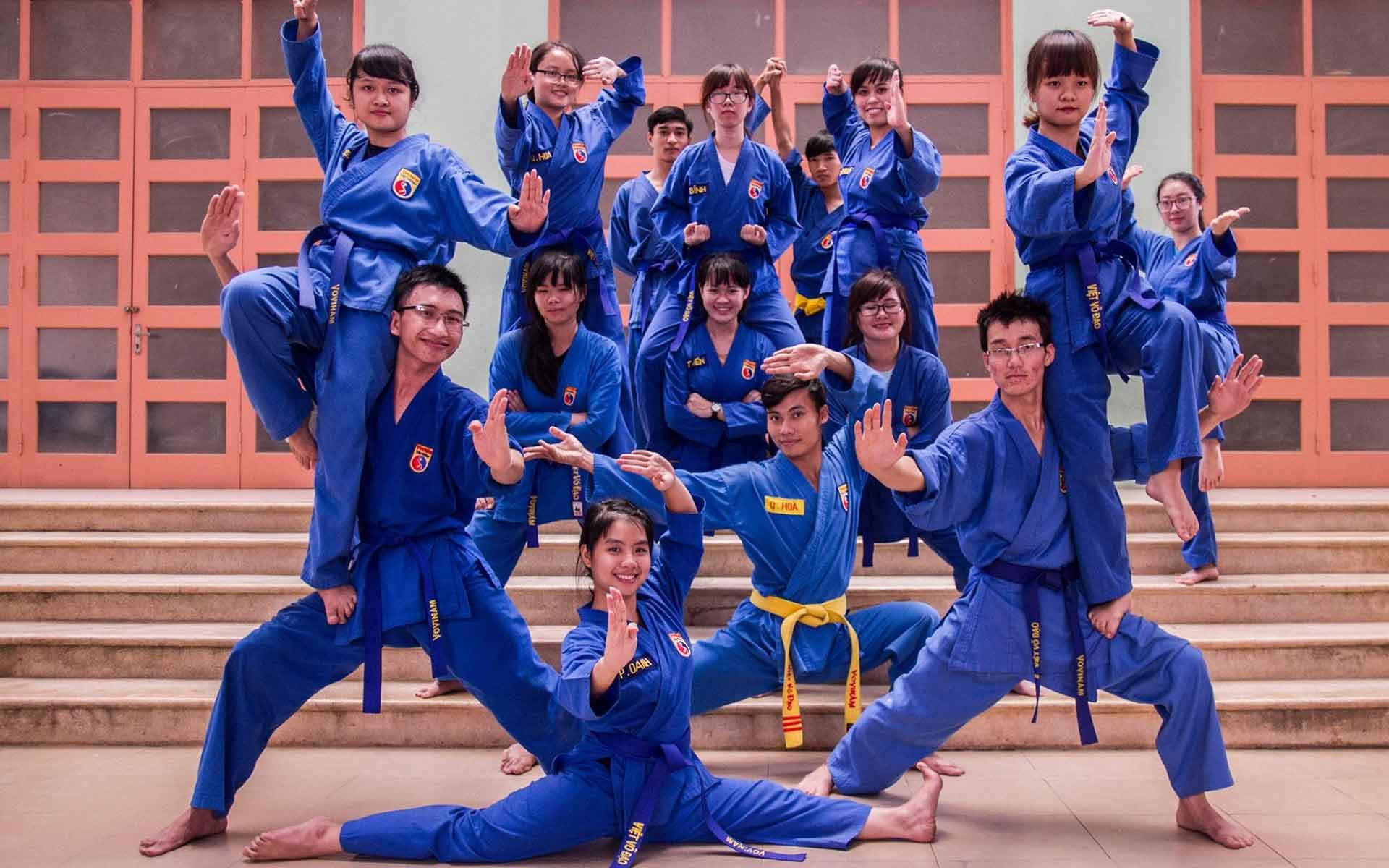
Festivals of Vietnam
Festivals of Vietnam are colorful and diverse events that reflect the rich culture and history of the country. They are often celebrated with traditional rituals, performances, games, and food. Some of the most popular festivals of Vietnam are:
Traditional Festivals:
- Tet Nguyen Dan (Lunar New Year): Undeniably the biggest, occurring in January/February. Witness family reunions, vibrant decorations, lion dances, and joyous fireworks.
- Hung King Holidays in March 10th ( lunar calendar)- Phu Tho province
- Saint Giong Festival – In March outside Hanoi in Soc Son district
- Ka Te Festival – In Champa community in Ninh Thuan Province
- Dong Da Festival in Hanoi
- Cau Ngu Festival in Hue in December
- Hội đua voi – Elephant racing in Don village – Dak Lak province
- Ba Chua Xu Festival – In Chau Doc city, An Giang province in April
- Cam Muong Festival in Lai Chau province.
- Hue Festival (Biennial): April/May in even years. Immerse yourself in a royal past with elaborate parades, traditional performances, and cultural exhibits in Hue's Imperial City.
- Perfume pagoda festival – Outside Hanoi
- Mid-Autumn Festival: Mid-September. Delight in the enchanting sight of children parading with lanterns, savor mooncakes, and enjoy outdoor festivities.
- Lim Festival: 12th/13th day of the first lunar month in Bac Ninh. Participate in traditional "Quan Ho" singing competitions, witness intricate costumes, and experience local games.
Cultural Shows and Celebrations:
- Buffalo Fighting Festival: October in Do Son. Witness this unique event featuring ritualistic buffalo fights, believed to bring good luck and prosperity.
- Ghe Ngo Boat Racing Festival: August in Thu Duc. Cheer on vibrant dragon-shaped boats powered by synchronized teams in this thrilling competition.
- Hoi An Lantern Festival: Every full moon in Hoi An. Be captivated by the magical sight of thousands of lanterns illuminating the ancient town's streets and waterways.
- Da Lat Flower Festival: December in Da Lat. Explore a captivating wonderland of blooming flowers, vibrant parades, and artistic exhibitions.
Holidays and other important days
Vietnam boasts a rich tapestry of holidays, with a total of 11 days marked for celebration throughout the year. These include both time-honored traditional festivals, deeply rooted in Vietnam's history, and contemporary holidays influenced by Western cultures. Commencing in 2021, the Vietnamese government has officially designated 11 public holidays. Among these, five days are dedicated to the Lunar New Year festivities, two for the National Day celebration, and one each for New Year's Day, the Hung Kings Commemoration Day, Reunification Day, and International Workers' Day.
Official Holidays:
- Lunar New Year (Tết): The most significant holiday, falls in late January/early February based on the lunar calendar. Celebrated for several days with family reunions, ancestor worship, and traditional festivities.
- Hung Kings Commemoration Day: 10th day of the 3rd lunar month (usually April), honors the legendary founders of Vietnam. Celebrations include incense offerings, cultural performances, and dragon boat races.
- Victory Day (Reunification Day): April 30, marks the end of the Vietnam War and the unification of the country. Parades, fireworks, and patriotic music are common.
- International Labor Day: May 1, a day off for workers with parades and celebrations focused on workers' rights.
- National Day: September 2, commemorates the founding of the Socialist Republic of Vietnam. Marked by official ceremonies, flag displays, and public festivities.
Other Important Days:
- Buddha's Birthday: Typically falls in May, observed by Buddhists with temple visits, prayers, and vegetarian meals.
- International Women's Day: Celebrated on March 8th, acknowledging the achievements and challenges faced by women in Vietnam.
- Mid-Autumn Festival: Celebrated on the 15th day of the eighth lunar month, a joyous occasion for children with mooncakes, lanterns, and lion dances.
- Teacher's Day: Celebrated on November 20th, honoring educators and their role in shaping the future.
- Trung Nguyen Festival (Ghost Festival): Occurs in the seventh month of the lunar calendar, when it's believed that spirits of the deceased roam the earth. Offerings and ceremonies are held to appease and guide them back.
In 2024, the tapestry of holidays is even richer. New Year's Day kicked off a celebratory three-day break that embraced the preceding weekend, granting Vietnamese workers a well-deserved rest. Looking ahead to 2024, public workers in Vietnam are set to relish a total of 17 days off for public holidays, thanks to an additional six days of compensatory leave awarded when holidays fall on weekends. This ensures everyone gets a chance to fully immerse themselves in the festivities, honoring both ancient traditions and modern influences.
Among the traditional holidays, the two most important and widely celebrated are the Lunar new year -TET, followed by the Mid-autumn lantern festival (TET Trung Thu), although the latter has been losing ground in recent years.
Last updated on 2024-01-06 03:51:53.
Other Blog
- Chu Chi tunnels or Cu Chi tunnels?
- Vietnam Tours from the United Kingdom
- How to get to Sapa from Hanoi
- Miss Pham Huong in the Danang Tourism's promotion video
- President Trump visits Da Nang City for 2017 APEC Forum
- The Ultimate Guide to Vu Lan Festival in Vietnam
- Best airfares from Hanoi to Yangon on Vietjet Air
- The best swimming pool in Sapa
- Son Doong - World’s Largest Cave
- 17 Vietnam Villages you should not miss to unravel Vietnamese traditional lifestyle


